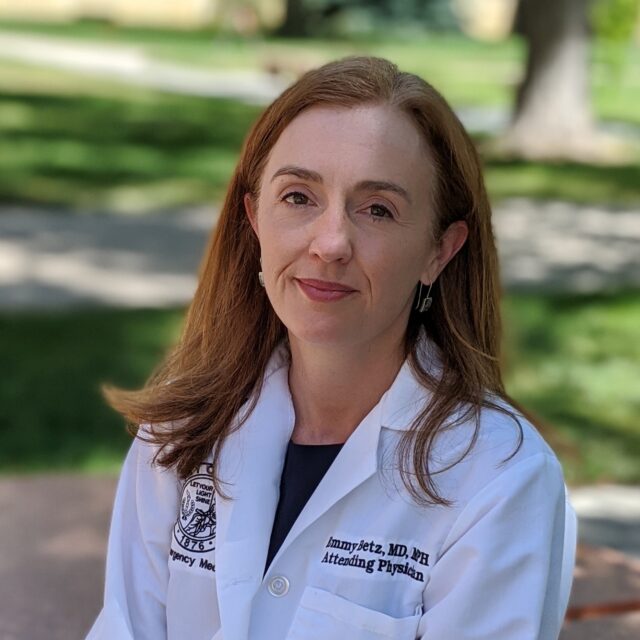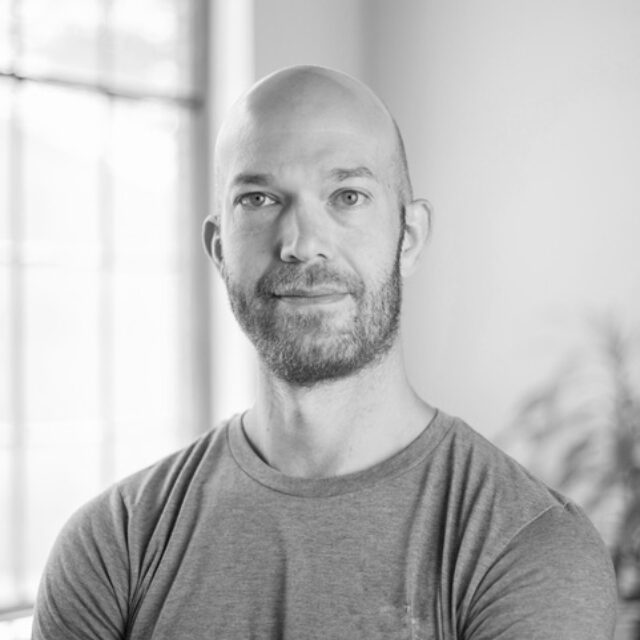Dr. Emmy Betz: Exploring the Ties Between Firearms and Suicide

9.28.2020
Introducing Safety in Numbers
Welcome to Everytown Research & Policy’s Safety in Numbers blog series, where we will invite leading experts in the growing field of injury and safety prevention to present their rigorous research in clear, user-friendly language on a regular basis. Our goal is to share the latest developments, answer important questions, and stimulate evidence-based conversations on gun violence prevention in which all of us can participate. If you have a topic you want to hear more about, please feel free to suggest it at: [email protected].
Sarah Burd-Sharps, Director of Research
Note: The views, opinions, and content expressed in this post do not necessarily reflect the views, opinions, or policies of Everytown for Gun Safety Support Fund.
Firearm suicide is a significant public health problem, and it’s getting worse. That’s why Dr. Emmy Betz, who is an emergency physician at the University of Colorado Anschutz and injury prevention researcher, co-founded and leads the Colorado Firearm Safety Coalition. Dr. Betz calls her work with the firearms community, “the most satisfying part of my career.” Through her research, she has been developing resources to keep guns out of the hands of those in crisis.
This Suicide Prevention Awareness Month, Dr. Emmy Betz is sharing her insights for Everytown Research & Policy’s Safety in Numbers blog series. Learn more in this Q&A.
Why is this work important to you?
My work with the firearms community has been the most satisfying part of my career, and it has become even more meaningful during such a divisive time in our country. On our team, we don’t agree on everything, but we share a common goal of wanting to prevent suicide and the ripples of grief it causes in families and communities. There are a lot of promising trainings and other interventions being tested right now that don’t require legislative action. Sometimes policy is the answer, but that doesn’t mean we should ignore other opportunities. We can learn so much from each other if we listen and lean into true collaboration.
How did you decide to focus on firearm injury prevention?
For about a decade, I’ve been doing research in “patient-centered injury prevention.” My multi-disciplinary team conducts research to prevent injuries through communication and connection, informed decision-making, and efficient and effective interventions. I’ve done work related to firearm suicide prevention and older driver safety, and these interests converged in studying firearm access in dementia. These topics are very meaningful to me as a physician, as I care for many patients who have experienced or are at risk of suicide or other types of firearm-related injuries. And, like far too many of us, I have lost friends and family to suicide myself.
What is compelling or unique about your research findings on dementia, suicide, and firearms?
The number of people with dementia in the United States is growing, and many of them have firearms in their home. Addressing firearm access can be difficult for caregivers, who want to ensure safety but also aren’t sure how to tackle a very sensitive topic. This is particularly relevant during Suicide Prevention Awareness Month because the majority of firearm deaths among older adults are due to suicide, and because dementia is a risk factor for suicide.
What are three implications of this research?
- We found that many older adults and caregivers haven’t talked about firearm access or made plans for what they would do with their guns, if they were to develop dementia. This suggests we need to start having these conversations earlier and more routinely.
- We found that caregivers look to a variety of sources for information. These include healthcare providers, dementia groups, and firearm organizations. Ideally, education and resources would be available widely, from many different sources, to make it easy for caregivers to get the answers they need.
- In one survey, caregivers thought accidental injuries would be the most likely kind of firearm-related injury if a person with dementia had a firearm. We know that suicide is far more common, so there is a need for broader education and outreach.
What solutions should be implemented to reduce the risk of suicide, and more specifically, gun suicide?
The recommendation for individuals at risk of suicide and their family is to put time and space between the at-risk person and methods of suicide, especially firearms (because of their high lethality). Often, a suicide attempt is made after only minutes to hours of deliberation. That’s why making the environment safe is so important. It allows the at-risk person to get the help and the crisis to pass. No one wants to lose a friend or family member to suicide, which is why it is so important we work with firearm owners to find solutions that will work for them.
Can you explain the resources you have developed with the Colorado Firearm Safety Coalition?
Lock to Live
We developed the Lock to Live website to help an at-risk individual and their family learn why it’s important to reduce access to guns and medications, and to guide them through the decision about how to do that. It presents different storage options (in the home and out of the home) and encourages the person to take action. The website is free and is currently being tested out in various healthcare and community settings.
Lock to Live was developed as part of a research project funded through a peer-reviewed Grant application to the National Institute of Mental Health. Our team believes it’s critical that interventions be developed and tested according to the high scientific standards. For Lock to Live, we used standard methods for developing this type of resource, and then we tested it in a small trial with suicidal adults at three emergency departments. The study wasn’t big enough to see if the tool changed home firearm storage, but the patients really liked it and felt it was respectful and useful.
Colorado Firearm Storage Map
Our team developed the Colorado firearm storage map to help people find local places that may temporarily store guns. These often include firearm ranges, retailers, and law enforcement. Lock to Live and the firearm storage map both encourage voluntary, temporary changes in storage. Extreme Risk Protection Laws can be a useful tool when these voluntary options fail, but they should be a last resort. We should always first be engaging and encouraging firearm owners in decision-making and voluntary storage changes. The map project began as a small ‘proof of concept’, but we’re excited to start a new research project this fall evaluating the maps in Colorado and Washington state.
What are some key areas of suicide prevention where more research is needed?
There are so many! Suicide is complex, and there are still lots of things we need to learn about how to identify and help those at risk. I’m particularly interested in questions about how virtual health or technological interventions might be helpful, and why suicide rates arising in certain groups in particular (such as young Black men). I think there’s also a lot of important new questions related to the COVID-19 pandemic. The recent PREVENTS effort lays out a roadmap for suicide prevention, including key research questions. While the project focused on Veterans, many of the recommendations apply broadly. Related to firearm suicide prevention in particular, major research questions include what kinds of messages, messengers, programs, or policies are most feasible and effective in reducing firearm access during suicide.
Resources for those in crisis
If you or someone you know is in a time of emotional crisis or needs to talk to someone, please call the National Suicide Prevention Lifeline at 1-800-273-TALK (8255), or text HOME to 741741 to reach the Crisis Text Line for free from anywhere in the US.
About Dr. Emmy Betz
Emmy Betz, MD MPH, is Associate Professor of Emergency Medicine (University of Colorado School of Medicine), Deputy Director of the Program for Injury Prevention, Education and Research (Colorado School of Public Health), and a Research Physician at the Geriatric Research, Education and Clinical Core (Eastern Colorado VA). She co-founded and leads the Colorado Firearm Safety Coalition, a collaborative effort between public health and medical professionals and firearm retailers to reduce firearm suicides. She serves as PI and Co-I on multiple research projects and has published over 100 peer-reviewed manuscripts. She is passionate about using public speaking, publications outside of scientific journals, and media engagement to help educate the public and policy-makers about injury prevention, and in 2015 she gave a TEDxMileHigh talk on firearm suicide.





